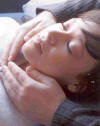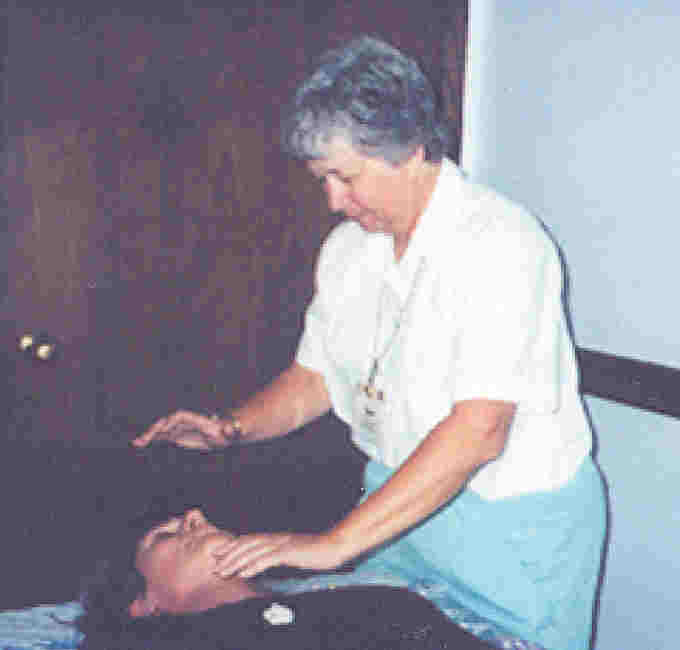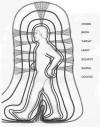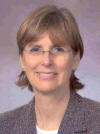
Years ago I had a friend who was a gifted hands-on
healer. Because her fundamentalist mother was concerned that her
practices may be reflecting the Devil’s influence, the mother asked the
local minister to counsel the daughter. After talking to my friend, the
minister asked if she could alleviate his arthritic knee pain. She did,
and after doing so, he told the mother: “Whatever she’s doing, I pray
she doesn’t stop; it’s God’s gift.”
Healing Resonance
Periodically, I’ve discussed such
healing. For example, elsewhere I noted that we all possess the healing
touch to some degree – “when we lovingly comfort a sick child or a
cherished pet in pain. Whether called spiritual, energy, hands-on, or
therapeutic-touch healing, it typically incorporates an altruistic,
compassionate, loving, or prayful consciousness that transcends our
usual view of separation from our fellow man. Through this
consciousness, we not only connect with the one who needs healing but a
greater source of energy that goes beyond giver and receiver.”
This connection is at the core of healing touch.
 In her book (see resources), Therapeutic
Touch founder Delores Krieger describes it as follows: “The healer
sensitively draws upon the universal energies that are the backdrop to
all living events and within which both healer and healee are figures
sharing a unitary nature.”
In her book (see resources), Therapeutic
Touch founder Delores Krieger describes it as follows: “The healer
sensitively draws upon the universal energies that are the backdrop to
all living events and within which both healer and healee are figures
sharing a unitary nature.”
Basically, when we resonate with these universal
energies – or, as some say, our divine nature - we are healthy. When we
get out of synch, we are prone to sickness. The purpose of healing touch
is to help us achieve a better resonance, allowing us to heal ourselves.
The idea of a healing resonance is not just
metaphysical speculation. Although most people
emit a variable electromagnetic frequency from their hands, scientists
have shown that healers emit a steady frequency that is identical to the
Earth’s resonant frequency. In other words, living in synchrony with
Mother Earth’s pulse seems to be health promoting.
Contemporary Healing Touch
Although some seem born with the gift, in fact,
healing-touch skills can be cultivated in most of us. Reflecting the
hands-on, compassionate nature of their profession, nurses have been the
driving force behind the development of contemporary healing-touch
programs.
The original program was Therapeutic Touch
developed by Dolores Krieger, a nursing professor, and Dora Ku nz, an
intuitive healer. Other pioneers include 1) Barbara Brennan a former
NASA physicist, who created Hands-of-Light School of Healing, and
2) Janet Mentgen (photo), a nurse who studied, taught, and practiced energy
healing before establishing the formal Healing Touch Program
about 20 years ago. Mentgen’s program was initially adopted by the
American Holistic Nurses Association before stewardship was passed to
Healing Touch International, Inc, a nonprofit educational organization
which trains and certifies healers, and fosters healing-touch research
and health-care integration.
nz, an
intuitive healer. Other pioneers include 1) Barbara Brennan a former
NASA physicist, who created Hands-of-Light School of Healing, and
2) Janet Mentgen (photo), a nurse who studied, taught, and practiced energy
healing before establishing the formal Healing Touch Program
about 20 years ago. Mentgen’s program was initially adopted by the
American Holistic Nurses Association before stewardship was passed to
Healing Touch International, Inc, a nonprofit educational organization
which trains and certifies healers, and fosters healing-touch research
and health-care integration.
Energy Basis
Healing-touch programs have been greatly influenced
by Eastern-healing philosophy, especially the concepts of life-force
energy (e.g., qi, prana, etc.), and energy fields and chakras.
Essentially, energy-based therapies believe that our physiology is
subordinate to our energetic nature. If we can tune-up our higher,
energy-based self, physical healing is more apt to fall into place. In
contrast, if we focus on just fixing physical symptoms, ignoring
underlying energetic determinants, we will still be directed toward
dysfunction. It’s like trying to push a car one way when the steering
wheel is cranked in a different direction.
In her seminal book
Hands of Light, Brennan summarizes how the human energy field is
composed of consecutive layers of increasing vibrational energy.
Intersecting the body and its energy field are seven tornado-like energy
vortexes called chakras, which download higher vibrational energy into a
form that the body can assimilate. When open and flowing, the chakras
are about six-inches wide and have a clockwise spin.
The various chakras
support different physical functions and organs, and are linked to
different states of consciousness. Cursorily described, the 1) root
chakra brings into the body life-force energy (also affects spinal
column), 2) sacral chakra influences reproductive function, 3)
sol ar-plexus chakra affects digestion, 4) heart chakra promotes cardiac
and circulatory function, 5) throat chakra helps lung function, 6) brow
chakra affects brain and nervous system, and 7) the crown chakra is
associated with the upper brain and our connection to the divine.
ar-plexus chakra affects digestion, 4) heart chakra promotes cardiac
and circulatory function, 5) throat chakra helps lung function, 6) brow
chakra affects brain and nervous system, and 7) the crown chakra is
associated with the upper brain and our connection to the divine.
Because of the
importance of chakras, healers often focus their efforts in sensing or
modulating chakra energy flow.
Traditional Chinese
Medicine’s acupuncture points and meridians are further down our
energetic pipeline - the meridians being the equivalent of the pipe and
the points being valves affecting flow through the pipe. Visualize this
acupunctural network as an equivalent to our circulatory system, except
distributing life-force energy.
Scientists are
increasingly developing the technology needed to observe our energetic
nature. They have shown that we all glow with visible-spectrum light;
it’s just too dim for most of us to observe. For example, a recent
scientific article started with: “The human body literally glimmers. The
intensity of the light emitted is 1000 times lower than the sensitivity
of our naked eyes.” (Kobayashi et al, 2009). Even our defining DNA emits
light (called biophotons), a process which has profound implications on
how we function in the world.
Techniques
Healing touch has been defined as an energy therapy
in which practitioners consciously use their hands in a heart-centered
and intentional way to support and facilitate physical, emotional,
mental, and spiritual health. It’s often used with other therapies to
accelerate healing.
Because the focus is the
energy field surrounding the patient, actual physical touching is often
not needed. The typical session is composed of several phases, including
centering, diagnostic, and energy modulation.
Initially, the healer
will try to become meditatively centered and go within. With such
centering, the healer connects to his or her greater intuitive self,
which speaks to us in whispers that rarely can be heard over life’s
background cacophony. This centering allows the healer to become more
consciously sensitive to the patient’s subtle energetic cues and to
harmonize with the universal healing resonance discussed above.
After centering, the
healer assesses the patient’s chakras and energy field with hand
scanning over the body or using assistive devices in way somewhat
comparable to a dowser. The healer searches out energetic imbalances,
evaluating energy flow, sensing how the energies feel – hot, cold,
tingling, congested, etc.
Finally, to help the
patient regain energetic homeostasis, the healer rebalances, clears, or
modulates the patient’s energy field using a variety of hand placements
or movements, such as the following:
Spinal
Cord Injury (SCI)
SCI Energy Concepts:
According to theory, in front of the spinal cord is a power column,
which receives energy from the chakras and transmits it vertically
through the body. Injury decreases this transmission because of the
cord’s nearness to the power column and the reduction in energy received
from the lower chakras.
The effects of the
injury are stored in the energy field closest to the body, which
contains the energetic template for every body cell and organ, including
the spinal cord. If this template is distorted, its physical product,
the body, will also be affected in some sense.
Mending the
dysfunctional energy vectors created by the injury should facilitate
physical healing. Because the injury tends to energetically get locked
in over time, the sooner this mending occurs, the better. Furthermore,
because negative, injury-associated emotional memories are stored within
the energy fields, the body should heal more quickly when this negative
energy is removed. Pain and spasticity are considered especially
amenable to energy therapy.
Pain:
Funded by the Veterans Administration, Dr. Diane Wardell (photo) and colleagues
at the University of Texas, Baylor College of Medicine, and Houston VA
Medical Center carried out a pilot study evaluating the use of Healing
Touch to treat SCI-associated neuropathic pain.

Seven male veterans with
SCI, at least six-months post injury, were treated with Healing Touch
and compared with five who received a non-healing-touch intervention.
All subjects had more than one month of neuropathic pain at a level
greater than 5 on a scale ranging from 0 (no pain) to 10 (worst
possible).
Certified Healing Touch
practitioners administered once-a-week sessions to each subject for six
weeks. To avoid practitioner variability, each subject was treated by
the same healer throughout the study. Based on the practitioner’s
assessment of the subject’s energy fields, the sessions were
individualized; i.e., different techniques were used on different
individuals. At the end of the study, the primary caregiver (e.g., wife)
for each subject was given the option to be trained in Healing Touch so
treatment could be continued.
In addition to a variety
of before-and-after quantitative measurements of pain and other factors,
qualitative opinions were solicited from the subjects. Although the
study was inherently limited due to the small number of subjects and
sessions, the results suggested that Healing Touch “may be beneficial in
the areas of coping, pain management, decreasing fatigue, decreasing
confusion, increasing life satisfaction, and decreasing depression.” The
investigators believed the results warranted further, more definitive
studies.
Qualitative reactions
from participants included: